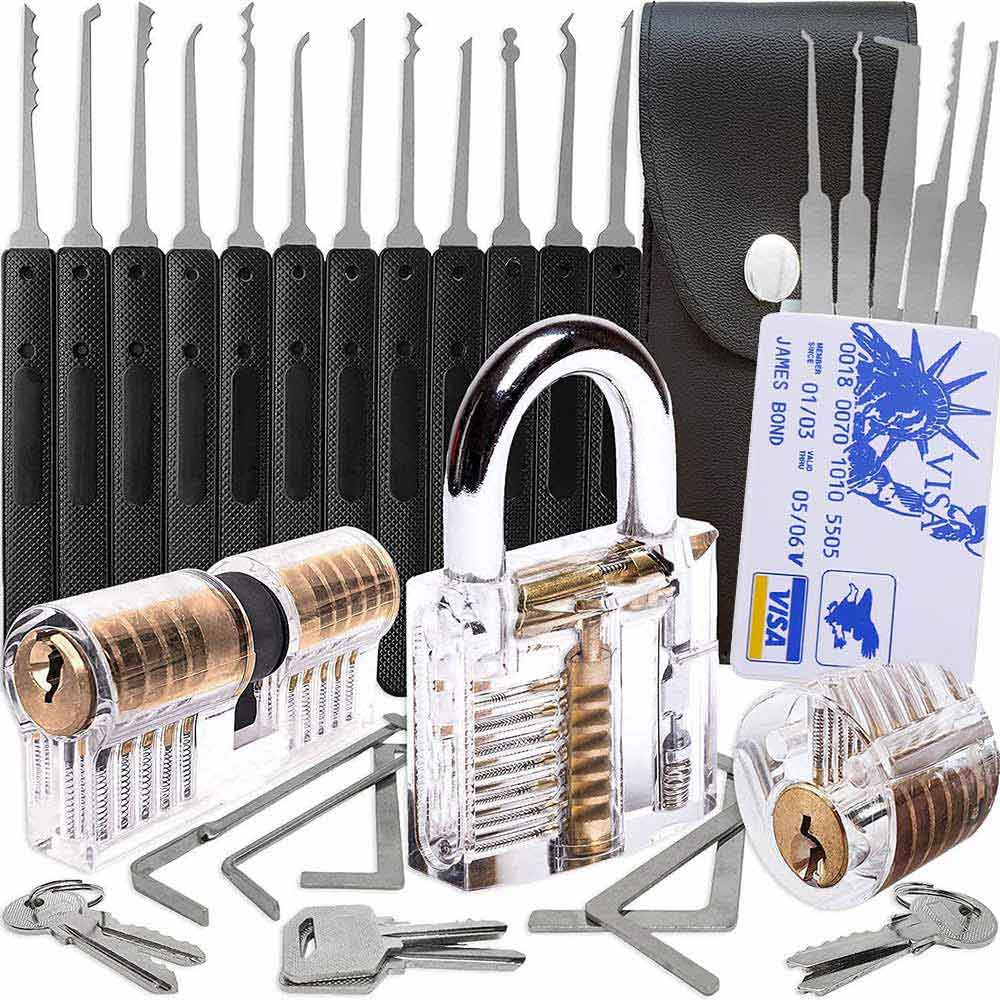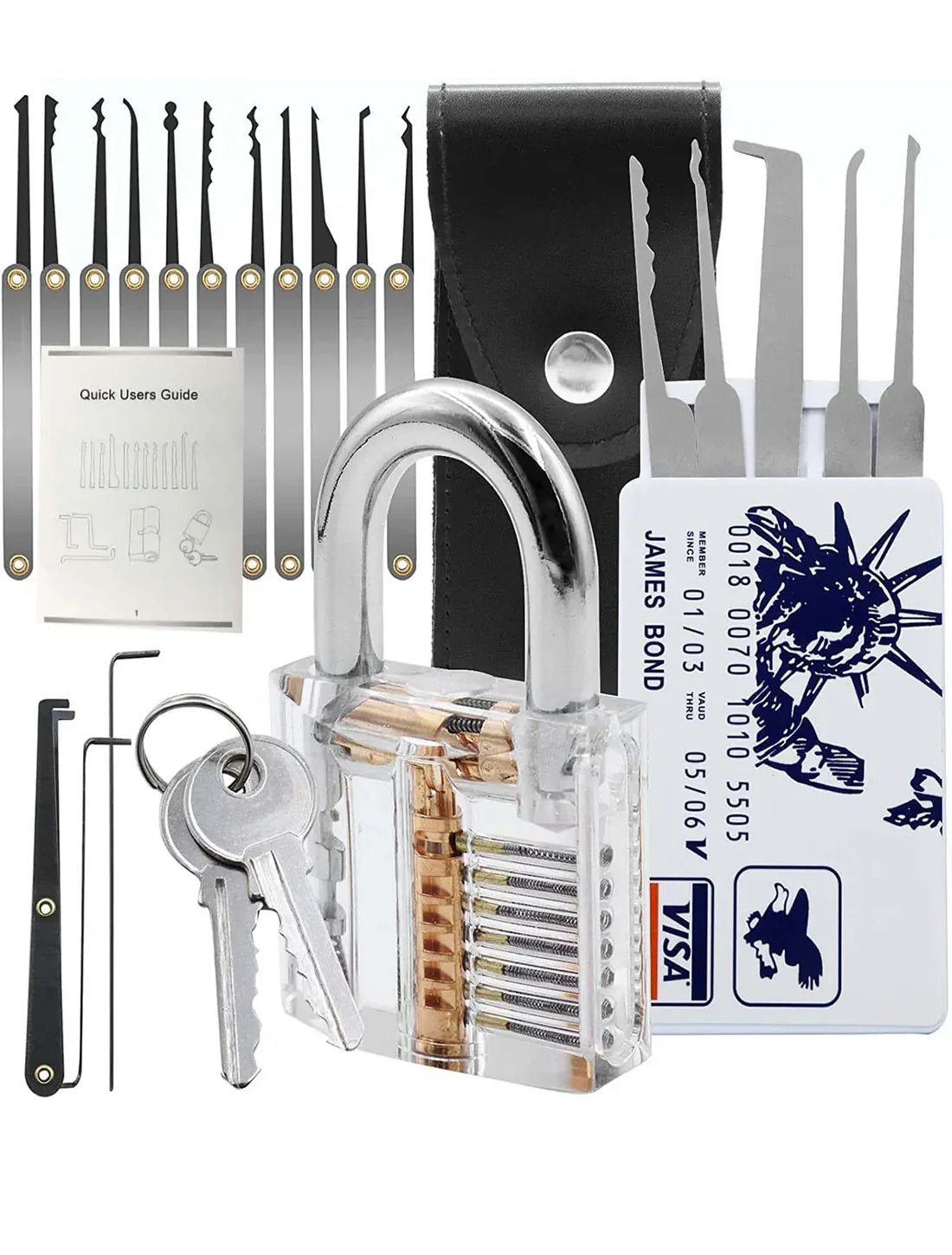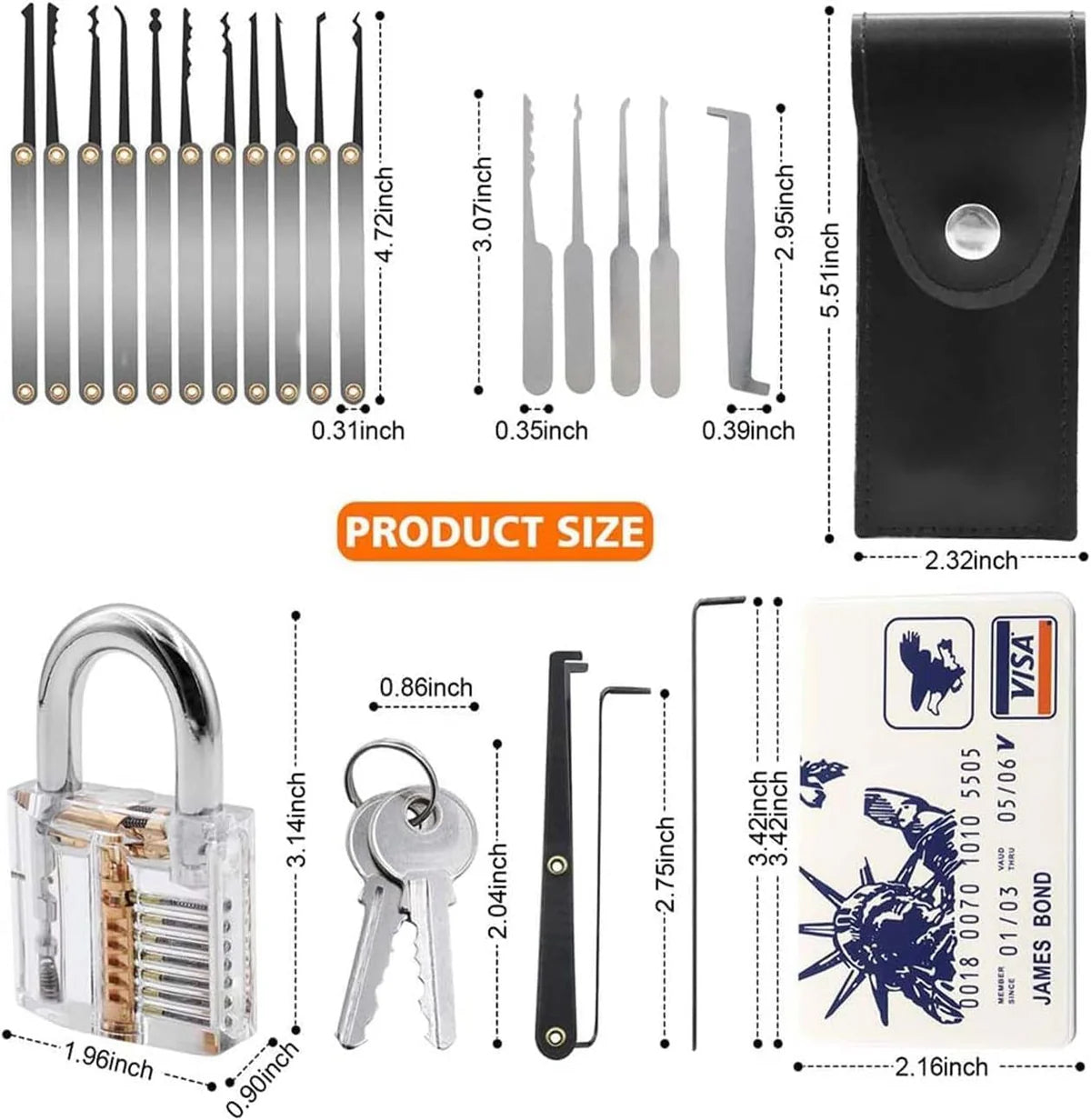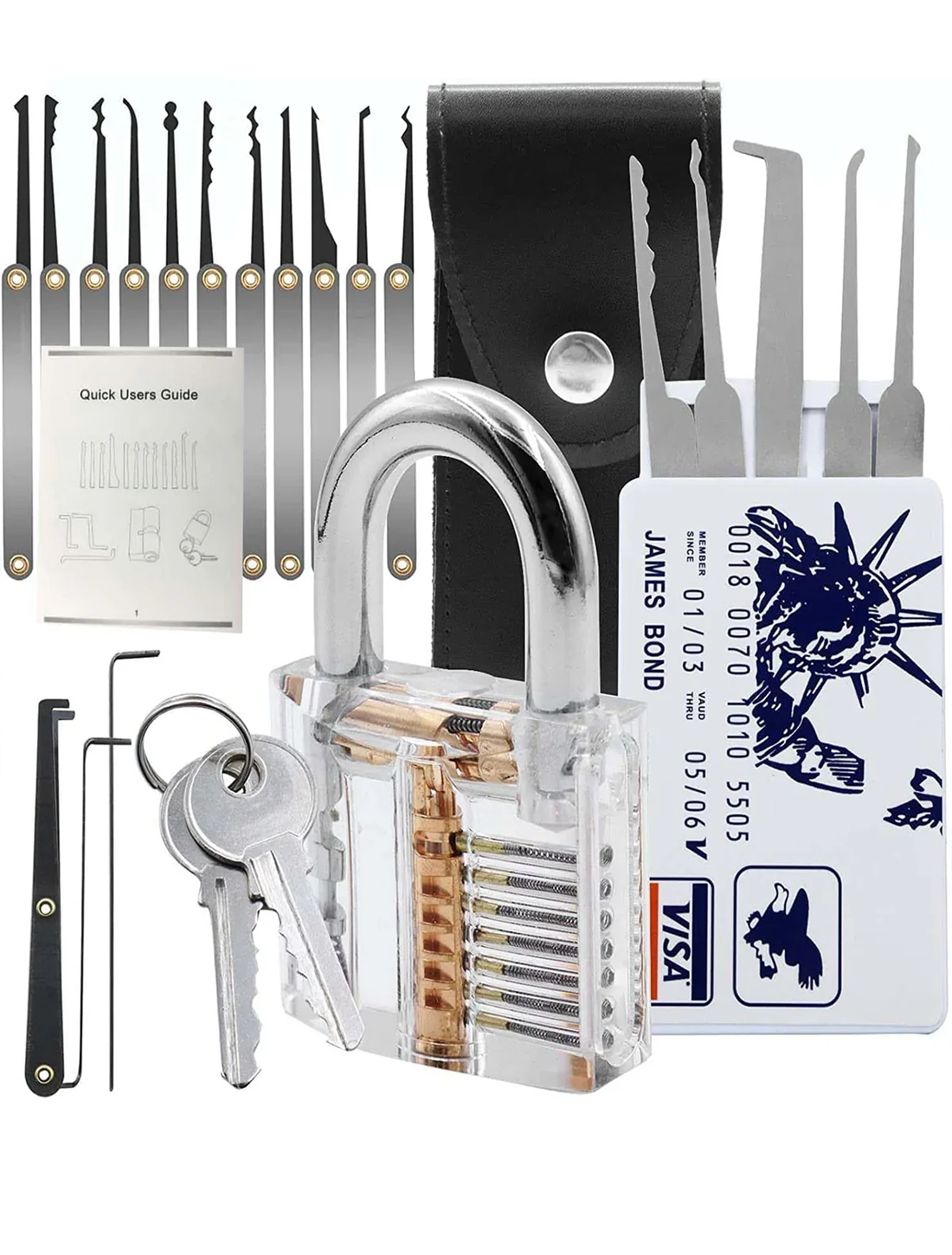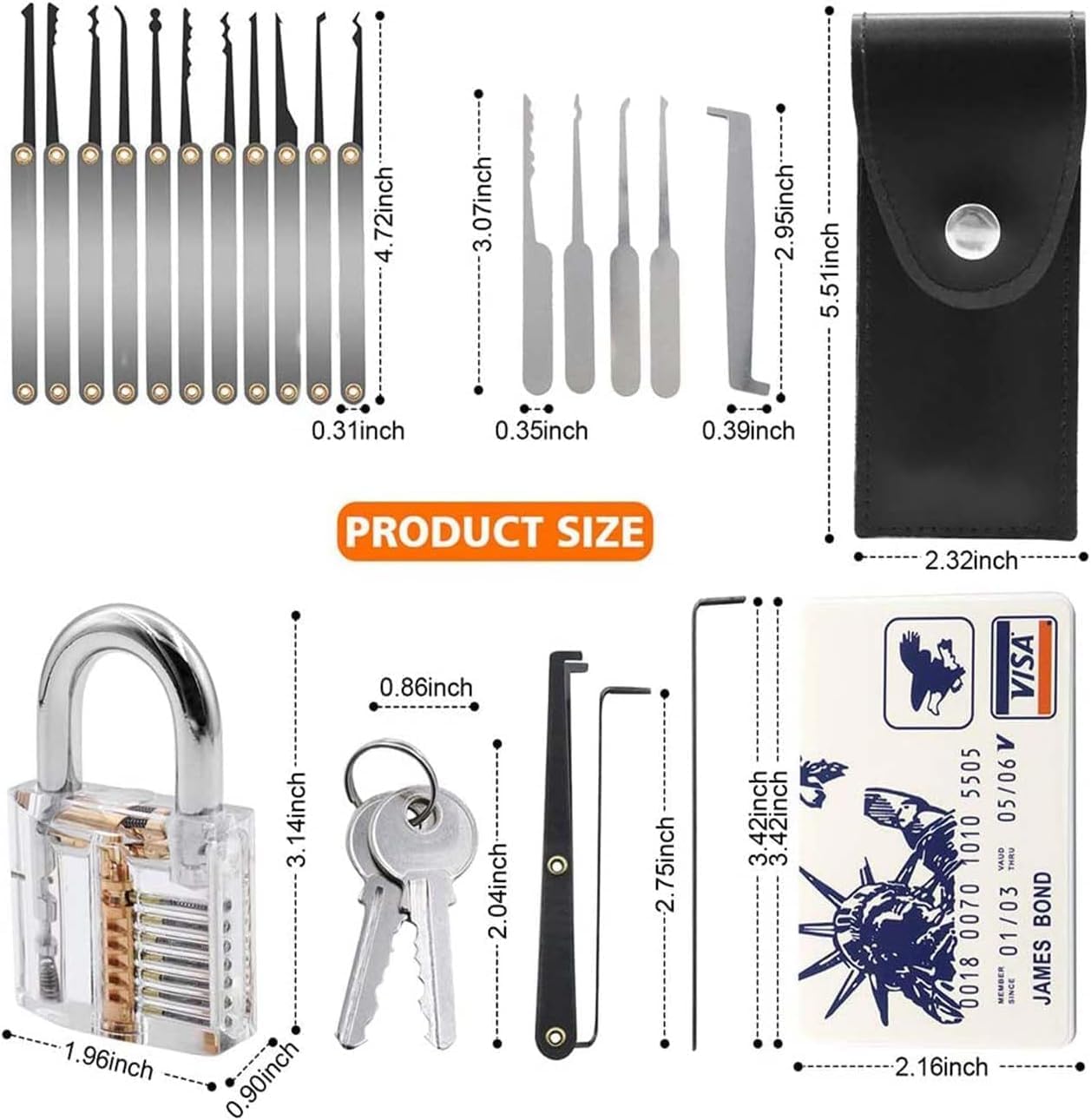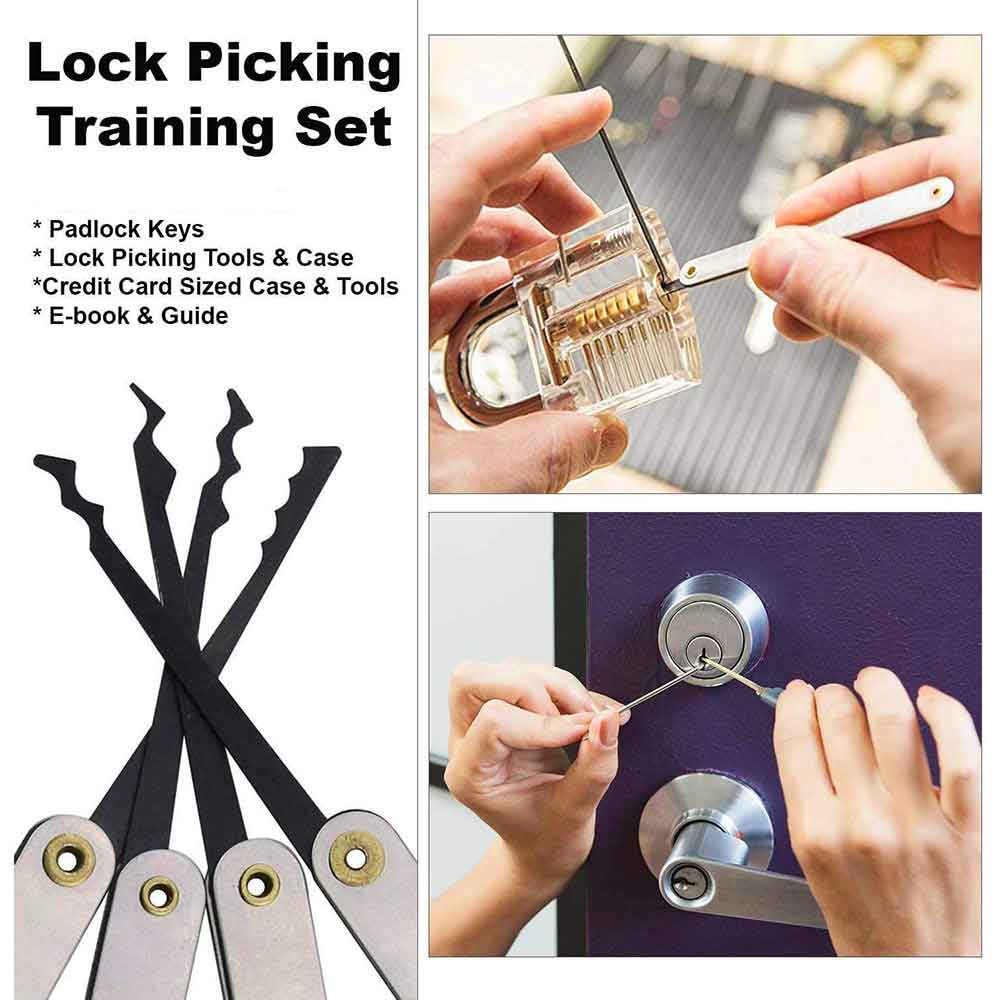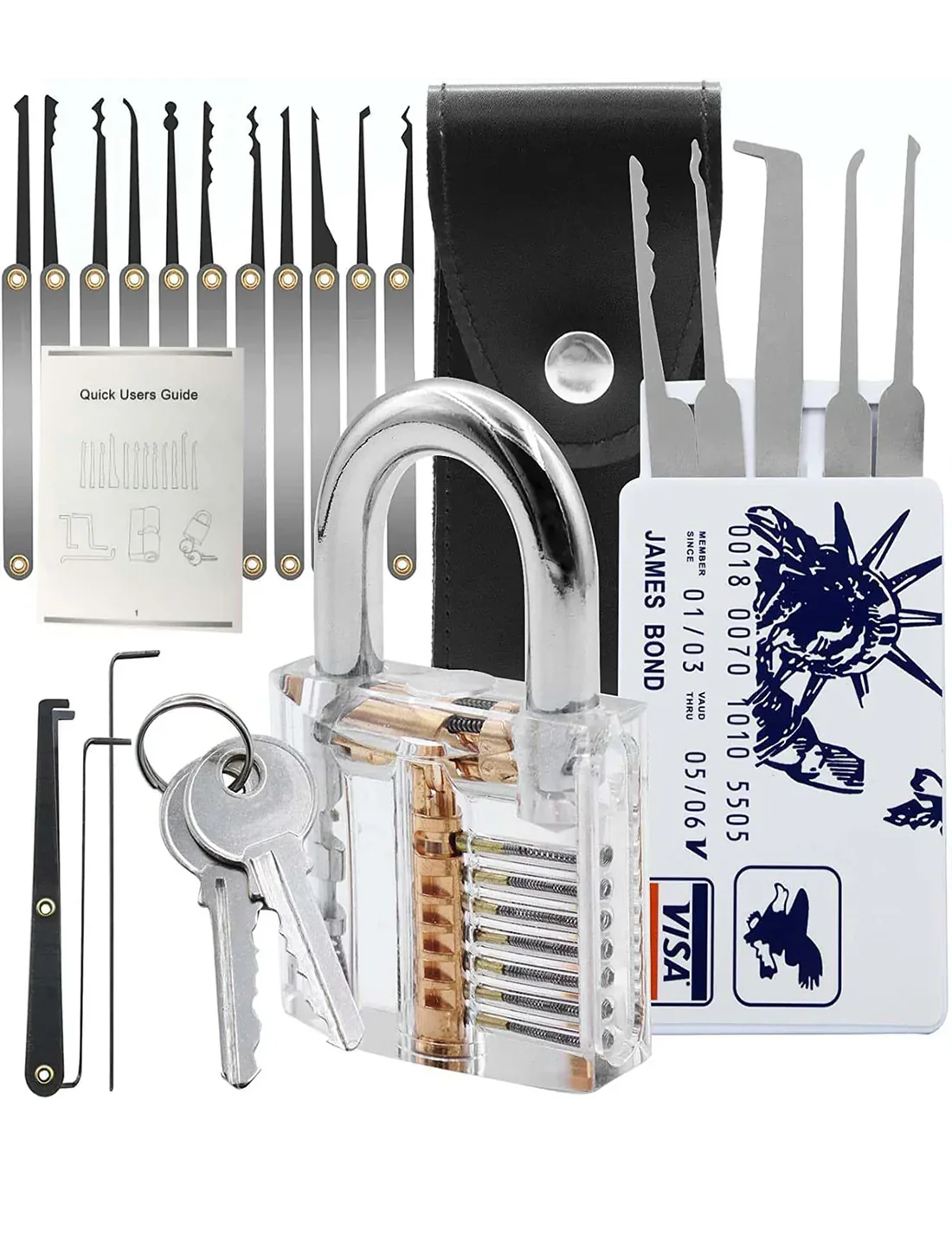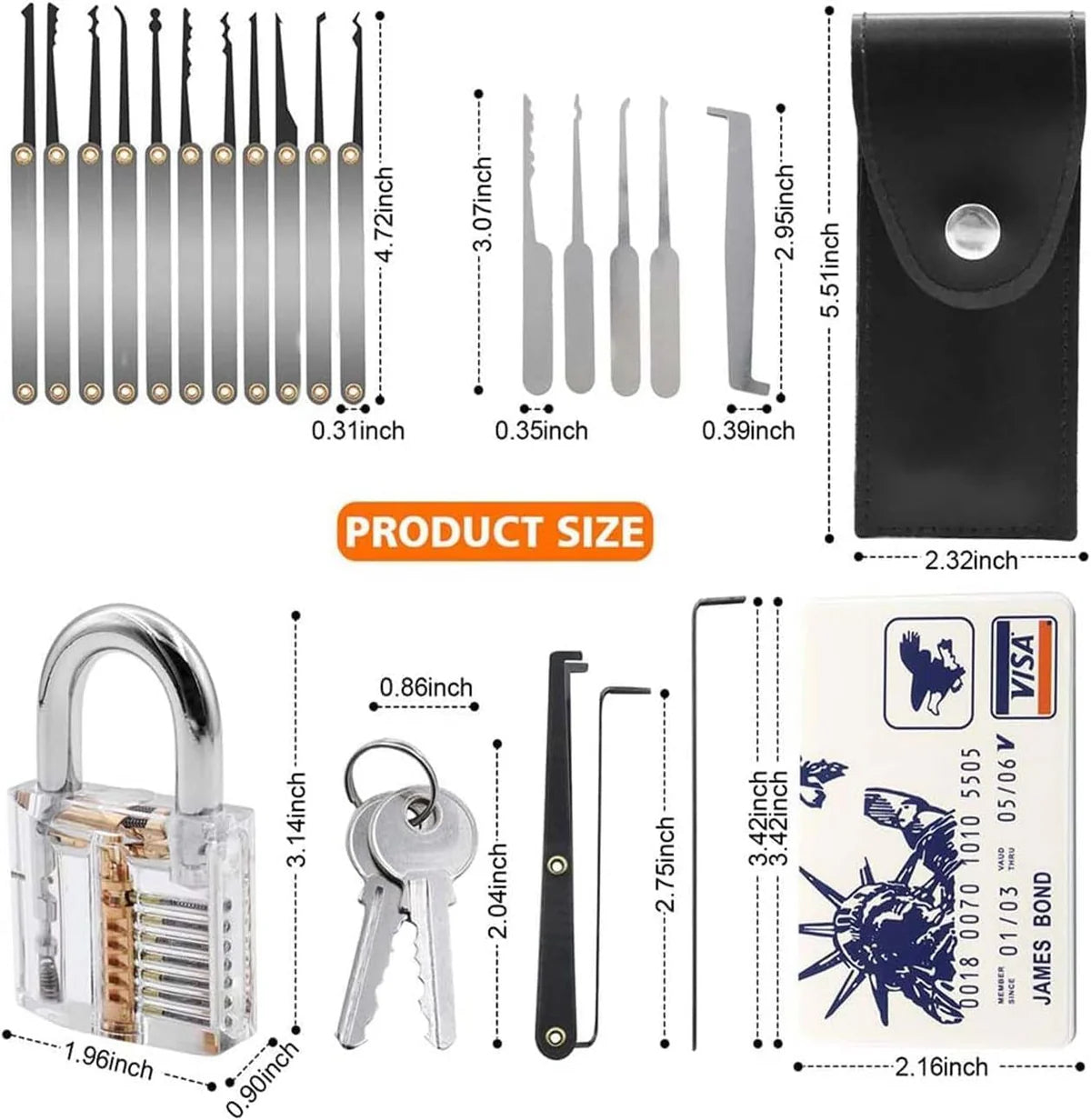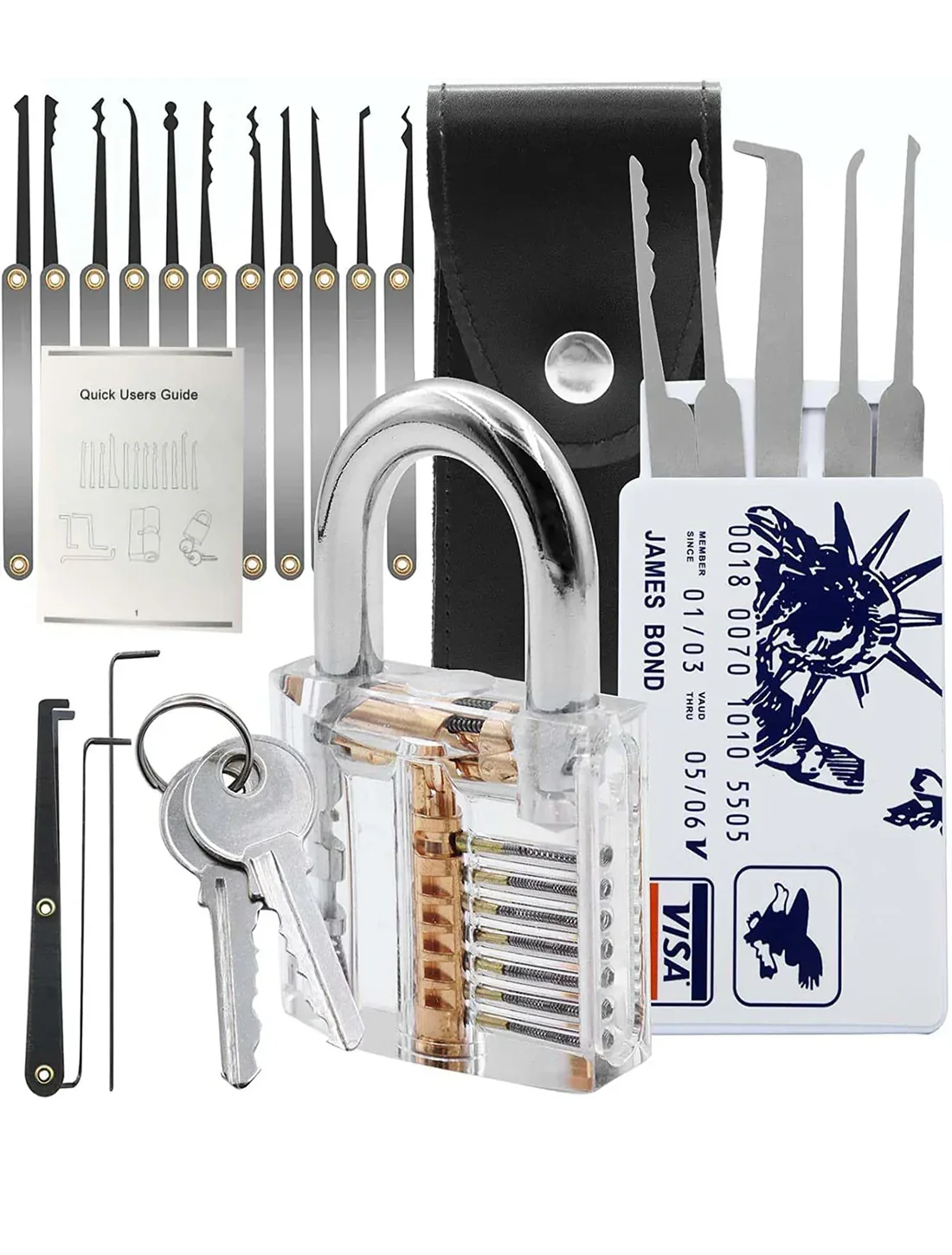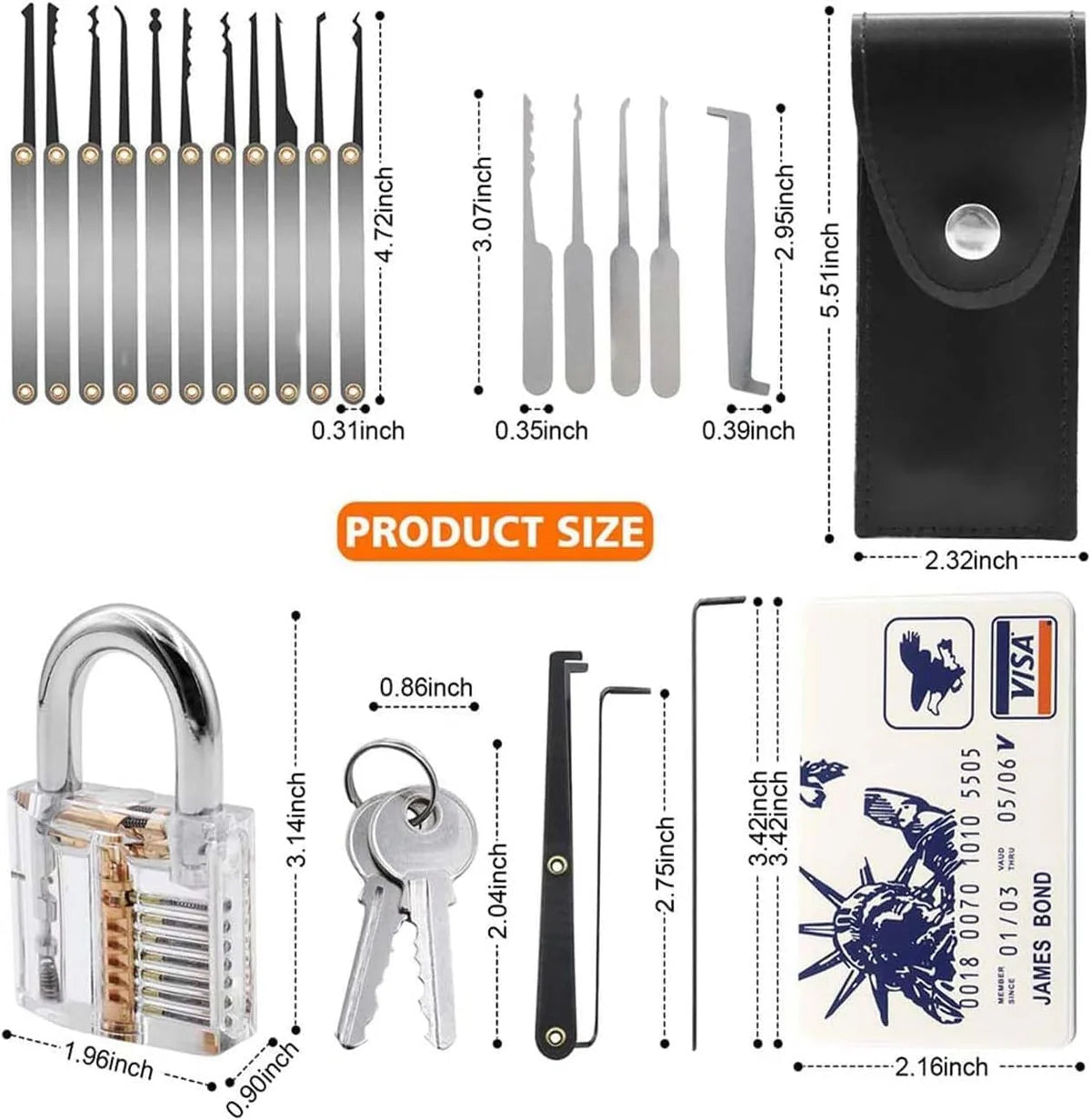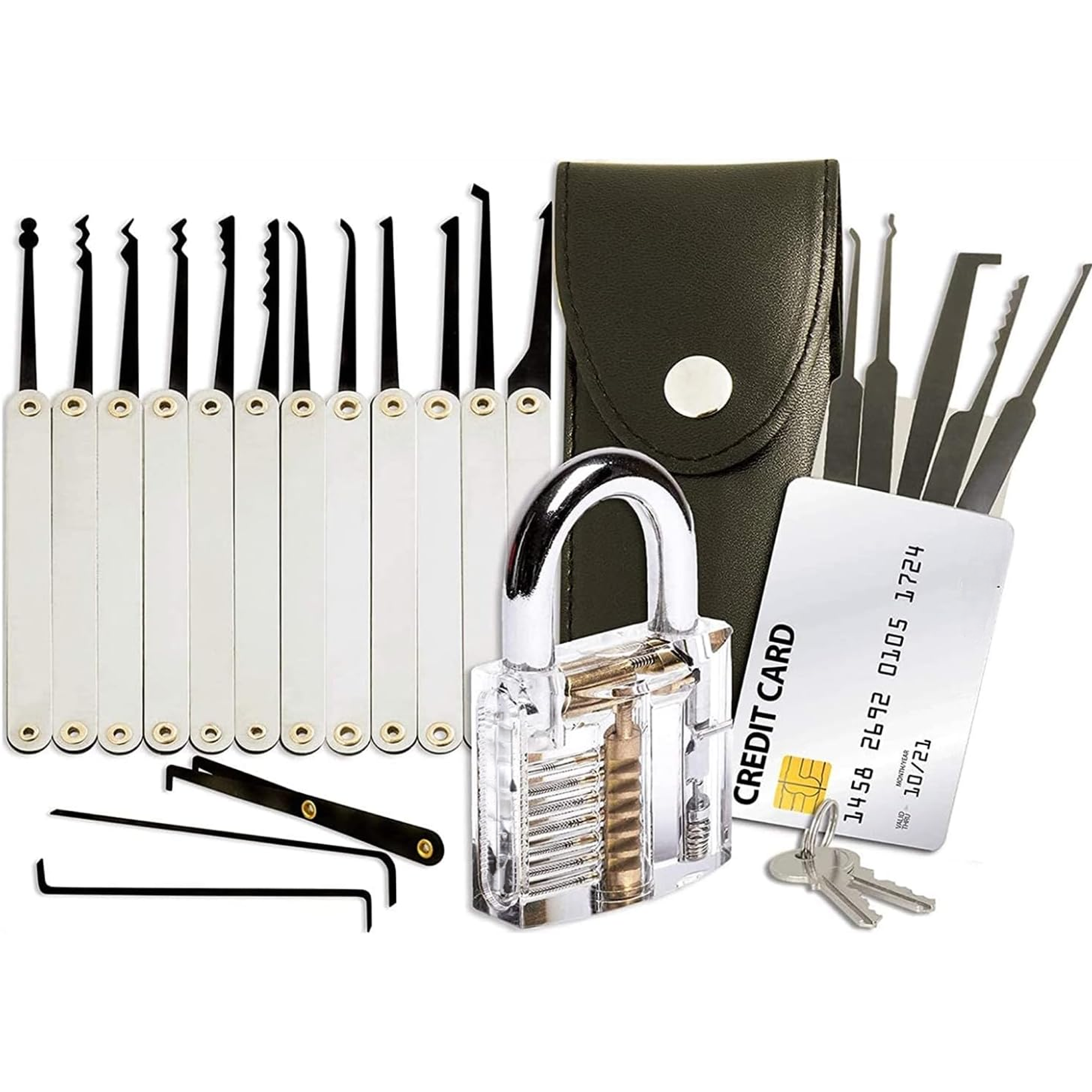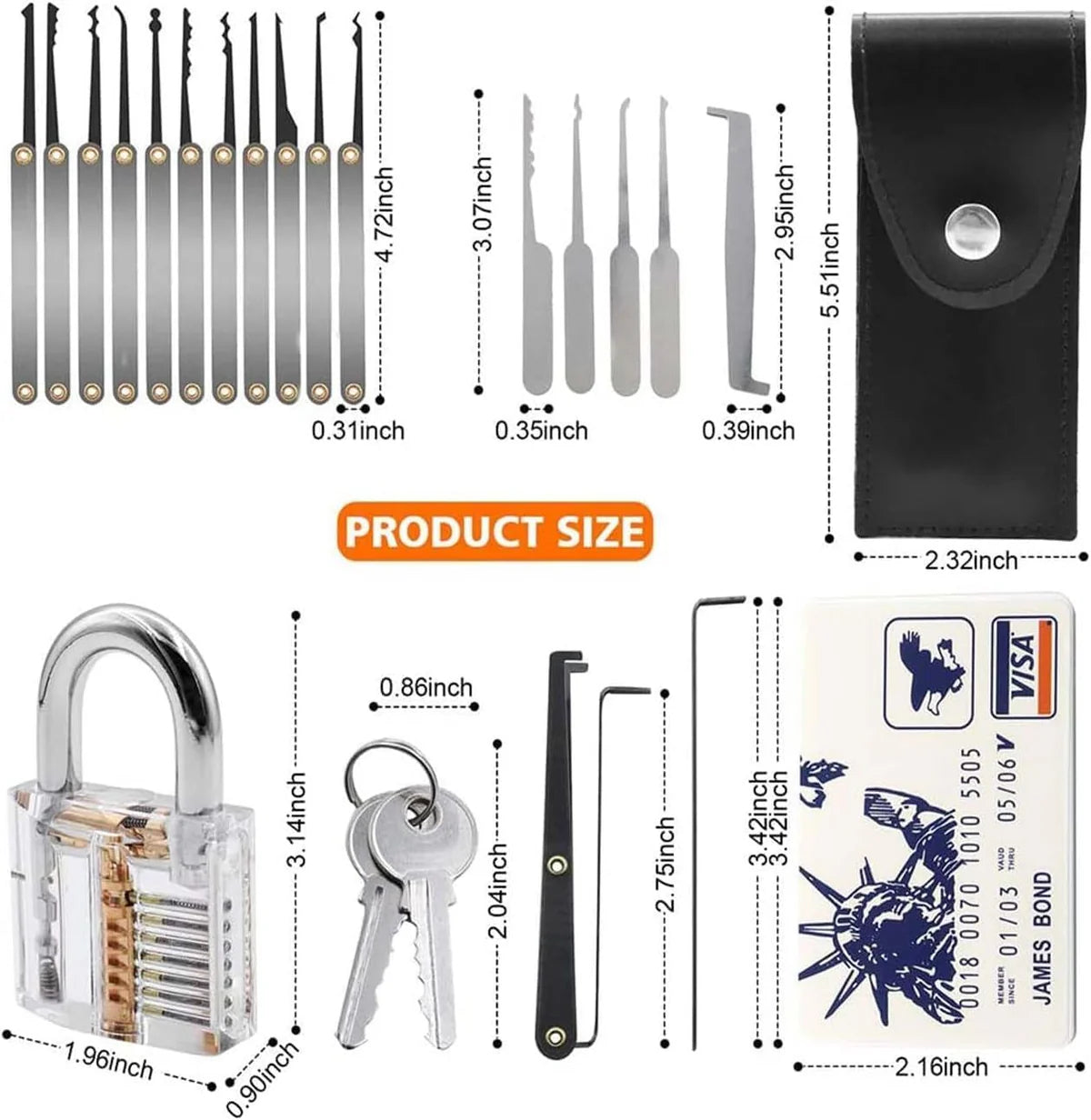Unlocking Potential: The Art and Science of Modern Lock Tools
From historical puzzle boxes to modern security systems, lock mechanisms have fascinated tinkerers for centuries. Today's enthusiasts require lock pick sets that balance precision with practicality - tools that feel like natural extensions of curious hands rather than cold metal implements.
The Complete 25-Piece Solution
Crafted for Performance
- Stainless steel construction survives years of repeated use
- Smooth surfaces avoid leaving noticeable marks during practice
Every Tool You'll Need
- 14 varied picks handle common lock types
- Three tension tools for different pressure requirements
- Discreet credit card tools for portable scenarios
Learn By Doing
- See-through practice lock demonstrates internal mechanics
- Step-by-step digital manual simplifies complex techniques
Who Benefits Most?
Security Experts
Field technicians appreciate how the lock picking set's contoured handles reduce fatigue during extended use. Multiple testers reported easier control compared to bulkier alternatives.
Curious Minds
Adjustable training locks with interchangeable pins let users create custom challenges. Start simple, then add security pins as skills improve - like leveling up in real life.
Built to Last
- Durable materials meet professional standards
- Compact case keeps components organized
- Consistent manufacturing quality control
Real-World Uses
- Mastering common residential locks
- Security system vulnerability testing
- Mechanical engineering education
Common Questions
How difficult is it to learn?
Most people grasp basic techniques within a weekend using the included guide. Like learning guitar chords - practice creates muscle memory.
Legal considerations?
Complies with lock sport regulations in most regions when used responsibly. Check local laws before traveling with tools.



